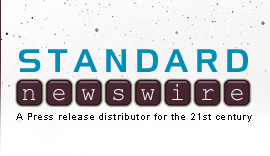Youth 239 times more likely to see ads promoting alcohol products than industry spots discouraging underage drinking.
Contact: Joseph Schmidt of Center on Alcohol Marketing and Youth, 202-687-0884, SchmidtJoe@aol.com; B-Roll with Ads available at www.brightlinemedia.com/camybroll.zip
WASHINGTON, June 27 /Standard Newswire/ -- Alcohol industry "responsibility" advertisements comprised less than three percent of the nearly 1.5 million alcohol industry television advertisements that aired from 2001 to 2005, according to a new study released today by the Center on Alcohol Marketing and Youth (CAMY) at Georgetown University.
The report, titled "DROWNED OUT: Alcohol Industry 'Responsibility' Advertising on Television 2001-2005," analyzed the industry's "responsibility" advertising because it is the largest source of such advertising.
In addition to looking at the number of ads, the study analyzed spending and found that of the $4.9 billion spent to advertise alcohol on television from 2001 to 2005, just 2% (or $104 million) was spent to air 41,333 "responsibility" advertisements.
The CAMY report showed that from 2001 to 2005, underage youth were 239 times more likely to see an advertisement selling alcohol than one of the industry's "responsibility" advertisements, designed to educate about the dangers of underage drinking. Additionally, during that same period underage youth were 32 times more likely to see an advertisement selling alcohol than a "responsibility" advertisement about drinking-and-driving and drinking safety.
"The primary messages kids get about alcohol on television are from alcohol product ads that not surprisingly promote their use and enjoyment," said David Jernigan, CAMY executive director. "To look just to the industry for messages on responsibility is clearly not smart public policy."
The CAMY analysis also found that:
- In 2001, youth ages 12 to 20 who saw alcohol advertising on television viewed an average of 217 alcohol product advertisements and 11 "responsibility" advertisements on television. By 2005, they saw an average of 309 alcohol product advertisements and 21 "responsibility" advertisements.
- Only 8 of 109 alcohol companies that bought television advertising time ran "responsibility" ads on television from 2001 to 2005 (and 6 of 56 in 2005). All the other companies ran product advertisements only.
- More alcohol brands aired "responsibility" advertisements in 2005 than in any prior year. Of the 174 brands that placed product advertising on television in 2005 at a total cost of $1 billion, 19 brands sponsored "responsibility" advertisements on television at a total cost of $28 million.
- "Responsibility" advertising spending varied widely among companies who ran such ads. Of the 8 companies that ran "responsibility" ads, Diageo plc invested the most in these advertisements over the 2001-2005 period, both in terms of dollars spent (nearly $66 million) and percentage of advertising dollars (18% over the five-year period). Over the same period, Anheuser-Busch Companies spent the second largest dollar amount (almost $20 million) on "responsibility" ads. This constituted about 1% of A-B's television advertising budget for the period.
Alcohol is the drug most widely used by
In 2006, the Sober Truth on Preventing Underage Drinking Act (STOP Act) was signed into law and authorized $1 million for a national media campaign on underage drinking. It also requires the Department of Health and Human Services to report annually to Congress on underage drinking, including the rate of exposure of youth to advertising and other media messages encouraging and discouraging alcohol use. The STOP Act, however, is only authorizing legislation, and Congress is considering this year whether it will fund these activities.
"Our findings clearly show that the alcohol industry's efforts to fight underage drinking through television advertising are never going to match its product advertising," said Jernigan. "We need a substantial national commitment if we expect our children to get a balanced message from television."
The Center on Alcohol Marketing and Youth at




 Sign Up to Receive Press Releases:
Sign Up to Receive Press Releases: